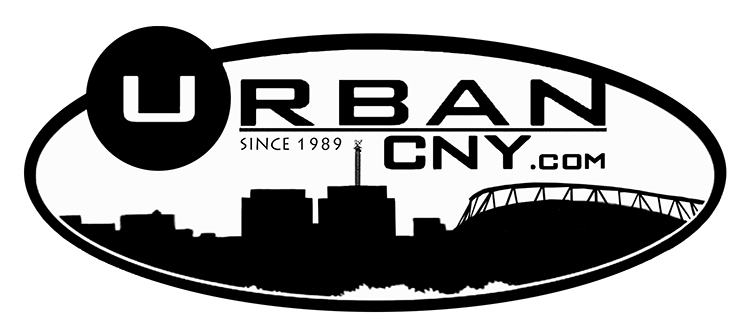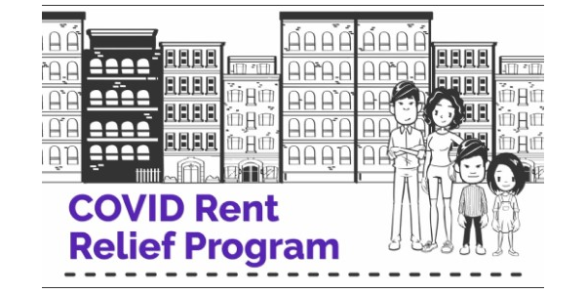Nearly $400 Million in Rental Assistance Paid Out – Nearly Doubling the Amount Paid in Past Three Weeks
New York State Now Ranked First Nationally in Payments Made or Obligated, with More Than $1.2 Billion
$125 Million in New State Funding Designated for Renters Previously Ineligible for Assistance Will Be Available Through the Emergency Rental Assistance Program Beginning September 15
Over $1.05 Billion in Excluded Workers Program Funds Approved for Distribution to Date; $550 Million Will Have Been Released by the End of the Week, Additional $500 Million Undergoing Final Verification
Governor Kathy Hochul today announced significant progress in providing pandemic relief to impacted New Yorkers through the Emergency Rental Assistance Program and the Excluded Workers Program. The amount of pandemic-related emergency rental assistance paid out has nearly doubled in the past three weeks — growing to $399 million — enabling tenants at risk for eviction to stay in their homes and helping struggling landlords to recoup unpaid rent. Beginning Wednesday, September 15, middle-income renters previously ineligible for assistance can begin applying for $125 million in state funding through the Emergency Rental Assistance Program. Additionally, while some is undergoing final verification, Governor Hochul announced that over $1.05 billion in Excluded Workers Program funds have been approved for distribution to date.
“When I was sworn in as Governor just three weeks ago today, I made it clear that my top priority was to accelerate getting relief money out the door as quickly as possible to New Yorkers struggling from the economic devastation of the pandemic,” Governor Hochul said. “While we are ramping up those efforts, our work still isn’t done. We will continue to provide critical assistance to excluded workers, pandemic-affected households that have fallen behind on their rent, and the landlords who saw their rental income drop significantly during the global health crisis.”
Governor Hochul has made providing relief to New Yorkers affected by the COVID-19 pandemic as quickly and efficiently as possible a top priority of her administration. Since her first day in office, the Governor has taken several steps to ramp up the state’s pandemic relief efforts, including creating the new Office of Pandemic Relief, enacting changes to accelerate the state’s rent relief program and attract more applicants, and visiting New Yorkers in hurricane damaged areas to help ensure they were being connected with and receiving the help they need.
Emergency Rental Assistance Program
Governor Hochul took office in late August with a focus on ERAP and announced a series of actions, including reassigning 100 contracted staff to work solely with landlords to complete pending applications, to accelerate the process. Since then, the number of payments issued has grown from 15,548 payments totaling $203 million to landlords, to 30,781 payments totaling $399 million to landlords.
Beginning Wednesday, the state is accepting applications for rental assistance from households adversely impacted by the pandemic and earning between 80 percent and 120 percent of the area median income, a group that was previously ineligible to receive help from the state’s Emergency Rental Assistance Program.
Under federal guidelines, only those households that were impacted by the pandemic and earning at or below 80 percent of the area median income were eligible for ERAP. Administered by the state Office of Temporary and Disability Assistance, this program is providing $2.6 billion in federal funding to pay up to 12 months arrears and three months of prospective rent directly to landlords, while providing approved tenants with up to a year of eviction protection, provided they continue to pay rent.
Area median income varies by county and by household size. Renters interested in applying for either federal or state assistance should visit otda.ny.gov/erap.
New York State is now ranked first nationally in payments made or obligated, with more than $1.2 billion, and is among the leaders in direct payments, according to the National Low Income Housing Coalition, which tracks the state-by-state implementation of ERAP.
New York has also far exceeded the threshold to avoid a ‘claw back’ of federal rental assistance funds and now qualifies to potentially receive funding allocated to other states that aren’t distributing this assistance quickly enough. Beginning on September 30, the Treasury may recapture excess funds that have not been obligated and reallocate those resources to high-performing jurisdictions that have obligated at least 65 percent of their original allocation.
OTDA Commissioner Mike Hein said, “With additional funding from the state, New York’s Emergency Rental Assistance Program is even more dynamic in the protections provided to tenants and the breadth of assistance afforded to landlords. With Governor Hochul’s continued attention to this critical issue, we are now seeing the powerful impact this program is having throughout our state and demonstrating once again that New York is a leader nationally in addressing the most challenging economic and social issues we face amid the global health crisis.”
Excluded Workers Fund Program
Governor Hochul has identified one of her top priorities as getting relief money out the door as quickly as possible to help New Yorkers struggling from the economic devastation of the COVID-19 pandemic. As part of these efforts, the Governor has worked to accelerate the distribution of Excluded Workers Program benefits. To date, the New York State Department of Labor has approved over $1.05 billion in Excluded Workers Program benefits for distribution. Of these benefits, $550 million will have been released by the end this week, and an additional $500 million is undergoing final verification for applicants identified as eligible, which is expected to be distributed in the next month. The program application launched on August 1, 2021, in 13 different languages, and to date, NYS DOL has received over 130,000 applications, over 75,000 of which have been found to be eligible thus far.
Approved applicants receive one of two benefit amounts based on the level of work eligibility documentation they provide in addition to verifying their identity and residence. Tier 1 qualifiers receive $15,600 and Tier 2 qualifiers receive $3,200. Of those approved to date, 99 percent have qualified for Tier 1 benefits. Approved applicants receive a one-time payment on a prepaid card mailed to the address provided in the application. Cards allow for cash withdrawal or purchases with merchants.
The Excluded Workers Fund was created to bring financial relief to thousands of workers across the state who lost income during the pandemic and did not qualify for government-issued COVID-19 benefits is in the final approval stages.
Applicants can apply online 24/7, and DOL’s 600-person multi-lingual call center is available six days a week. The EWF application process utilizes state-of-the-art technology, including an EWF virtual assistant that can provide applicants with their application’s status throughout the process. Applicants can also speak with a live representative or receive a callback in 24 to 48 hours. The application and an FAQ document are available in 13 different languages on the Department of Labor’s EWF page.
Similar to unemployment insurance claims, the safeguards and fraud detection built into the thorough review process are designed to ensure that funds go to eligible applicants, not scammers.
DOL plans to make available a real-time dashboard that will provide the latest EWF program data in the coming weeks. In the meantime, DOL will post hourly updates of EWF program data to its website.
New York State Department of Labor Commissioner Roberta Reardon said, “The Excluded Workers Fund is providing real relief to thousands of New Yorkers who played critical roles in our state’s pandemic response, but did not qualify for state or federal unemployment benefits. I encourage all eligible individuals who lost wages or income during the pandemic to apply for this vital lifeline.”
In early September, Governor Hochul signed into law a moratorium on COVID-related evictions through January 15, 2022. This legislation also established a new $250 million program to serve additional households and better support landlords. Through this program, $125 million in state funding is specifically earmarked for those households with an income too high to participate in the federally-funded ERAP.
Additionally, the legislation set aside $125 million in state funding to assist those landlords with tenants that either refuse to participate in the program or have vacated the apartment with arrears. Federal guidelines require that both tenant and landlord apply to the program, so the additional state funding will allow OTDA to post a separate application for landlords seeking this assistance sometime in early October.
New York’s program does, however, allow for a tenant to be provisionally approved for assistance, while the other side of the application is pending, and a robust effort is undertaken to persuade the landlord to participate. If a landlord refuses to provide information needed to complete an application or refuses to accept the funds, the tenant is provided with a letter that can be shown in court in the event of eviction proceedings.
Tenants approved for the program cannot be evicted because of an expired lease or for failure to pay rent during the COVID-19 pandemic. Once a landlord accepts a payment, the tenant cannot be evicted for not paying rent during the period covered or for an expired lease during the 12 months following this payment.
Governor Hochul continues to encourage New Yorkers struggling to pay back rent that accumulated during the pandemic to apply for the program. More than 200,000 applications for ERAP have already been received.









